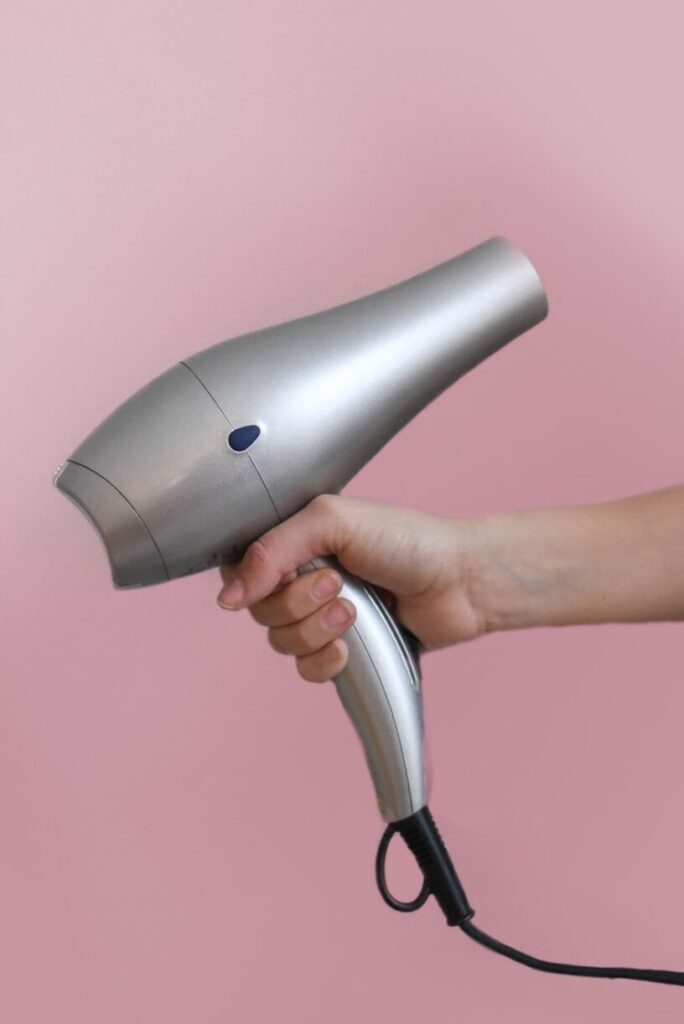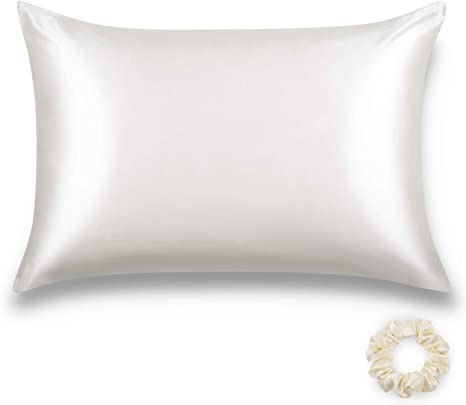Hair breakage is a distressing and common problem which is caused by a variety of factors. These include general mishandling, dryness and over processing. This is different to split ends, which is when the ends of the hair is dry, brittle or frayed. While these two problems seem similar, the causes are different and so is the treatment. I have created a table of 10 common mistakes that cause hair breakage and how to fix them below. In this post I will go into detail on how to fix them in order to answer the question: Why is my hair breaking?
| Incorrect brushing |
| Mishandling when wet |
| Excessive and uncontrolled heat exposure |
| Pulling too much while styling |
| Chlorine and salt water |
| Shampooing too frequently / incorrectly |
| Lack of moisture |
| Cotton pillowcase |
| Hard water |
| Infrequent hair appointments |
Breakage occurs when the hair structure is damaged. The cuticle, which is the outer layer of the hair shaft, resembles roof tiles. When the hair is healthy the cuticles lie flat against the hair shaft. When damaged they open and tear, which can eventually cause the strand to fall apart and break off. This leaves the hair looking frizzy, broken and uneven.

10 common mistakes that cause breakage and how to fix them
1. Incorrect brushing
Hair brushing has many benefits when done correctly, it distributes the natural sebum that our scalp produces, keeping our hair healthy and strong. It stimulates our scalp, which promotes healthy growth and it removes any loose hairs, keeping the overall look smooth and clean.There is actually a correct and incorrect way to brush hair. Vigorous hair brushing is one of the most common and easily avoidable mistakes which cause hair breakage.
A soft brush or a good paddle brush is essential to avoid excess damage from brushing. It is advisable to brush your hair in sections, starting a few inches from the ends and working your way up, removing the brush if it gets caught. Move slowly about two inches up at a time towards your roots, detangling each section and then finally brushing all of your hair at once.

2. Mishandling when wet
Hair is particularly sensitive when wet and should be treated very delicately. It is preferable to allow the hair to dry about 30% naturally before brushing. This is made easier by using a good quality microfiber towel or even a cotton T-shirt to absorb as much water as possible. Rubbing the hair vigorously with a towel can cause damage so best to roll the hair up into the towel or gently pat the hair dry instead.
If your hair is very knotty, a leave in conditioner can help with detangling the hair. This should be applied to towel dried hair or according to the manufacturers instructions. The same guidelines apply from point one, brushing in small sections from the ends, working your way up. A wide tooth comb can be used on wet hair, or a wet brush which is soft and specifically designed for fragile, wet hair.
3. Excessive and uncontrolled heat exposure
Ideally heat exposure should be kept to a minimum, but of course we all use heat styling so it is important to do it the right way. The first thing is not to forget your heat protection. If you are someone who regularly uses heat is is imperative that you protect your hair. It is advised to loosely rough dry your hair around 70% before you start to blow dry with a brush. Be sure if you are using a flat iron or curling iron that your hair is 100% dry.
It is very important to use high quality tools. Low quality hairdryers can be too hot and too slow, burning your hair before it’s even dry. There are several professional grade hairdryers on the market which are not very expensive and have proper heat controls and a high speed. I highly recommend the Parlux Powerlight because it is very powerful and just 450 grams, light enough to use on your own hair without strain. When it comes to flat irons, ceramic is best as it is gentler on the hair.

4. Pulling too much while styling.
In order to avoid breakage, our hair should not be pulled back or clipped too tightly. Ideally when tying up the hair it should be with a gentle tie (not elastic!) and would not be tied the same way every day. When the hair is tied in the same spot every day it causes wear and tear and eventually can cause breakage.
If you have a weave or extensions it is important to give your hair a break, ideally after two to three months. Remember to get this done by a professional as removing a weave or extensions incorrectly can cause damage to the hair. If you wear clip in extensions, remember to remove them before shampooing.
5. Chlorine and salt water
Chlorine and salt water can be damaging to our hair, but I would not suggest skipping swimming for that reason. Rather, to take precautions that can be taken to care for our hair during and after the swim. The first thing is to wear a swim cap. While it won’t prevent the salt water and chlorine from reaching your hair entirely, it will protect it from excess exposure.
After swimming I recommend to thoroughly rinse out your hair, removing as much residue as possible and then using a swimmers shampoo. This is specially designed to remove all chlorine and hard water residue which is too strong to come out with regular shampoo. Swimmers often struggle with dry and brittle hair so a mask or an oil is recommended at least once a week for regular swimmers.
6. Shampooing too frequently or incorrectly
Hair produces an oil called sebum which moisturizes and protects our hair and scalp. Using harsh products or shampooing too frequently causes the sebum to be stripped away, leaving the cuticles vulnerable to damage. I discuss PH in greater detail as well as how over-shampooing can cause damage here.
An important distinction to make is the health of your hair shaft vs the health of your scalp. For instance, if your hair is very oily and you need to shampoo more frequently, you can shampoo the scalp only since this is where the oil is produced. Avoiding excessive or unnecessary rubbing of the hair shaft will help to minimize damage. Dry shampoo is a damage-free solution to oily hair and can be used between shampoos.

7. Lack of Moisture
Dry hair is one of the main causes of breakage. This is caused by several factors, mostly sun and weather damage, over brushing and heat exposure as well as chemical damage. If your hair is dry due to chemical damage you can use a salon grade treatment at home such as Olaplex 3 which will help to rebuild the bonds of your hair. For hair that is naturally dry a weekly mask can be all that the hair needs to regain its moisture.
Heat protector is vital when heat styling and of course don’t forget that UV protection! The damaging effects of the sun are easy to see, especially around the top section of our hair. This tends to be the area which we color the most frequently as well as heat style the most, and should take extra care of.
8. Cotton or polyester pillowcase
If you are a regular on my blog you will know that this is something I am deeply passionate about. The silk pillowcase is a life changer, for several reasons. Cotton is absorbent, which means it absorbs all the natural oils your skin and hair need to stay healthy and moisturized. Silk or satin will leave your natural oils where they should be, on your skin and hair!
The smooth surface of the silk pillowcase will snag the hair less during the night, causing fewer knots. Fewer knots mean less brushing which means less breakage. This is the one thing that for me was literally a game changer. I’ll never sleep with a cotton pillowcase again and neither should you.

9. Hard water
Hard water causes mineral build up on our hair and skin. This can make our hair brittle and cause hair breakage. A here.
10. Infrequent hair appointments
This one may seem obvious, but your stylist will often spot a problem before you might notice it and will be able to advise you accordingly. While as we mentioned before, split ends are different to hair breakage, they are often caused by similar mistakes and with regular care, can be avoided.
Hairstylists will be happy to book a standing appointment for you. For example if you would like to book every three months for a color, treatment and cut, you can choose the day of the week and time that works for you and schedule the entire year of appointments. That way it’s done and you don’t need to think about it again. Hairstylists are also usually happy to book in a consultation, where you can discuss any concerns you may have about your hair.
One final note: Hair health as will all health begins with proper nutrition and a healthy lifestyle. Remember to include zinc, iron and folic acid into your diet. Also, hair breakage is not the same as hair loss. If your hair is falling at the root you might want to check your vitamin levels and seek professional advice. Hair loss can be caused by anemia or other deficiencies, stress or hormone changes.
Remember to pin this to your boards so you can come back to it later!



